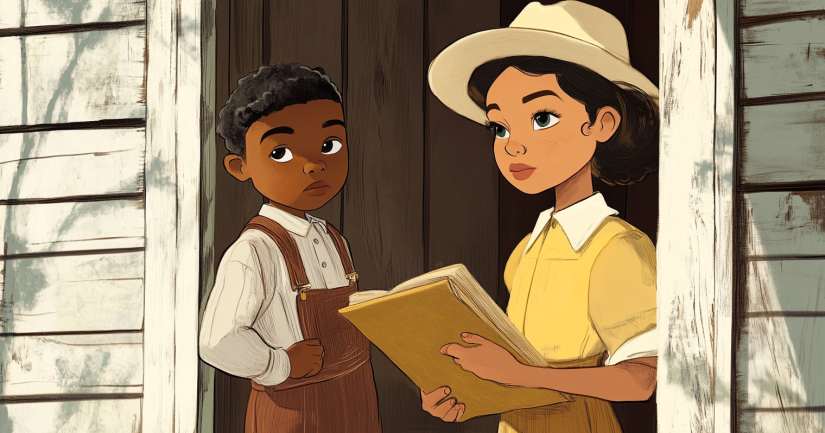
Explore the language and terms of Bud’s world with the Bud, Not Buddy Vocabulary Quiz. Expand Your Understanding of the Novel’s Language. The Bud, Not Buddy Vocabulary Quiz challenges your knowledge of important words and phrases used in Christopher Paul Curtis’s novel. Understanding these terms will help deepen your appreciation of Bud’s journey, the historical setting, and the themes of the story. This quiz focuses on vocabulary related to the Great Depression, jazz culture, and Bud’s personal experiences.
Christopher Paul Curtis uses rich, historically accurate language to bring Bud’s world to life. The vocabulary reflects the struggles of the Great Depression, the slang of the time, and Bud’s unique perspective as a ten-year-old navigating an uncertain world. The Bud, Not Buddy Vocabulary Quiz will test your ability to define and understand these words in context.
Try the Bud Not Buddy True Or False quiz. Explore the story’s quotes with the Bud Not Buddy Quote Identification quiz. For the ultimate challenge, take the Bud Not Buddy Full Book quiz.
Ready to Begin the Bud Not Buddy Vocabulary Quiz?
Why Vocabulary Matters in Bud, Not Buddy
Fun Facts About the Language in Bud, Not Buddy
- Some words in the novel reflect 1930s slang. Terms like “on the lam” (meaning on the run) and “hoop” (a car) capture the language of the time.
- Curtis uses figurative language to make Bud’s experiences more vivid. Metaphors, similes, and hyperbole add humor and depth to Bud’s narration.
- Music-related vocabulary plays a key role in the story. Since Bud spends time with jazz musicians, terms like “gig” (a music performance) and “improvise” (to make up music on the spot) are important.
- The novel includes terms related to hardship. Words like “Hooverville” (a shantytown during the Great Depression) and “mission” (a place where homeless people could get food and shelter) reflect the struggles of the era.
Vocabulary Words to Know
Great Depression Terms:
- Hooverville – A makeshift homeless camp named after President Hoover.
- Mission – A charity-run shelter
- On the lam – A slang phrase meaning to be on the run or escaping.
- Bread line – A line of people waiting for free food during the Great Depression.
Jazz and Music Terms:
- Gig – A slang term for a musician’s job or performance.
- Improvise – To create something on the spot, often used in jazz music.
- Horns – A term used for brass instruments like trumpets and trombones.
- Jam session – A casual performance where musicians play together without formal preparation.
Character and Story-Related Vocabulary:
- Plagues – Bud refers to “plagues” as bad things that keep happening to him.
- Reputation – A person’s character as judged by others.
- Tussling – A struggle or fight, often used when Bud is dealing with Todd Amos.
- Revenge – The act of getting back at someone, which Bud attempts against Todd.
Figurative Language in the Novel:
- Metaphor – A figure of speech that describes something by comparing it to something else without using “like” or “as.” Example: “I had to fight like a tiger to wake up” (hyperbole and metaphor combined).
- Simile – A comparison using “like” or “as.” Example: “It felt like a hundred needles were stabbing my legs.”
- Hyperbole – An exaggerated statement. Example: “That was the scariest place I had ever been in my life!”
Why Take the Bud, Not Buddy Vocabulary Quiz?
This quiz will help strengthen your understanding of the novel’s historical language, character expressions, and literary techniques. Expanding your vocabulary will also improve your ability to analyze the novel’s deeper themes.
Take the Bud, Not Buddy Vocabulary Quiz now to test your knowledge of key terms, their meanings, and how they shape Bud’s journey!
Bud, Not Buddy Quizzes – Step Back in Time …
Bud Not Buddy Vocabulary – FAQ
The vocabulary in Bud, Not Buddy plays a crucial role in setting the historical context of the Great Depression era. It reflects the socio-economic conditions and cultural nuances of the time, helping readers immerse themselves in Bud’s journey. The language used by the characters also adds authenticity and depth to their personalities and experiences.
Christopher Paul Curtis uses distinct vocabulary and expressions to give each character a unique voice. Bud’s language, for instance, often reflects his youthful curiosity and resilience. The dialogue and word choices reveal much about the characters’ backgrounds, emotions, and relationships, making them more relatable and memorable.
Yes, the vocabulary underscores themes of hope, determination, and the search for identity. Words associated with music, family, and survival frequently appear, reinforcing Bud’s quest for belonging and understanding of his past. The language captures the essence of these themes, resonating with readers on an emotional level.
The vocabulary enriches the storytelling by painting vivid images of Bud’s world. Descriptive language allows readers to visualize scenes and feel the emotions conveyed. Curtis’s choice of words creates an engaging narrative that keeps readers invested in Bud’s adventures and the challenges he faces.
Certainly. Terms like Hooverville and Depression are significant as they provide historical context. Phrases such as slogging through and shantytown evoke the struggles of the era. Understanding these words deepens the reader’s comprehension of the setting and the protagonist’s experiences.
